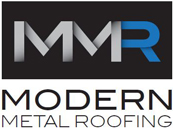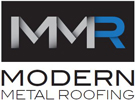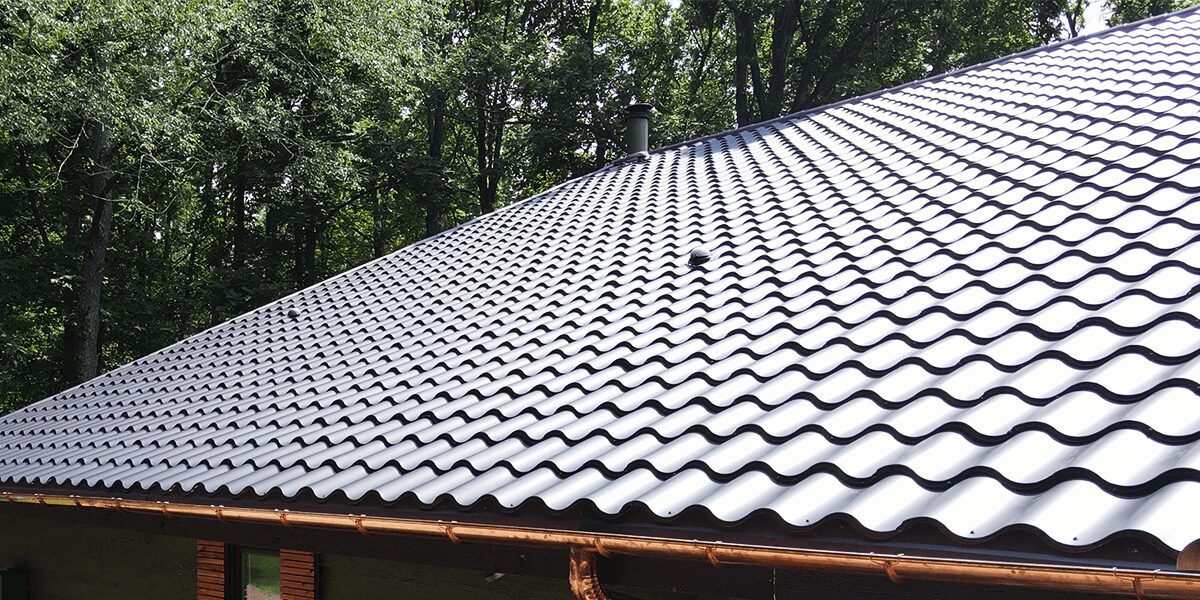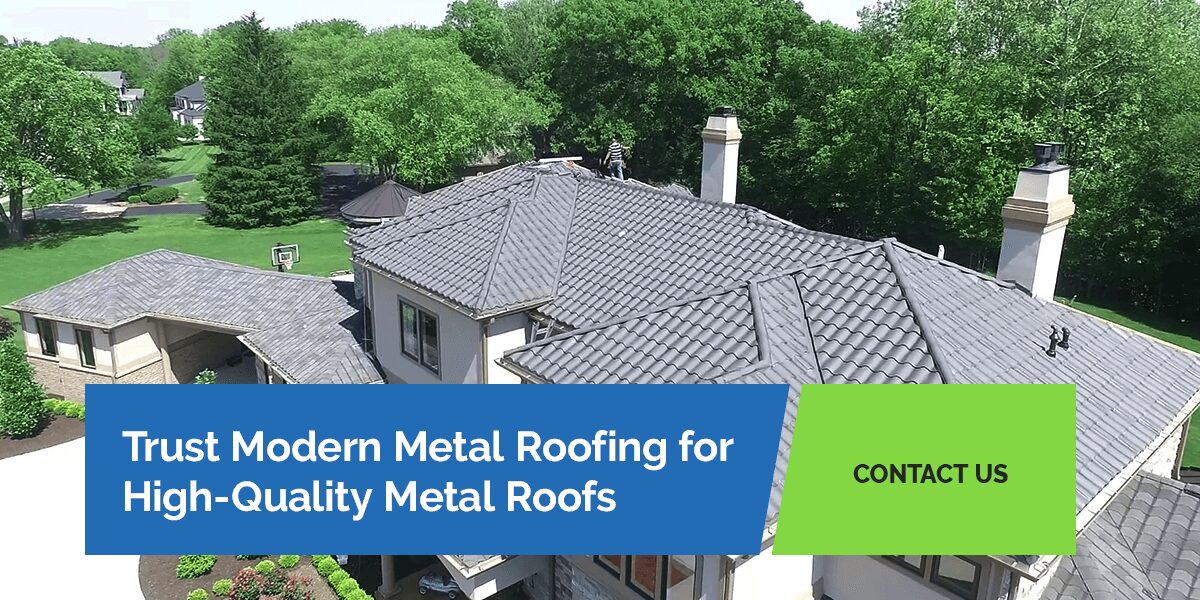Aluminum roofing is a popular, versatile and lightweight option for residential and commercial buildings. It offers durability, energy efficiency and corrosion resistance for long-lasting roofing systems.
What Is Aluminum Roofing?
Aluminum roofing from Modern Metal Roofing is made from .032 aluminum and comes in different forms, including tile, shake and standing seam. It is often preferred for structures that might not support heavier materials.
Advantages of Aluminum Roofing
Aluminum roofing is ideal for commercial buildings as well as residential homes because of these advantages:
Weather Resistance
One of aluminum’s most significant advantages is its weather-resistant properties, which make it suitable for various environments, including coastal areas. It can withstand extreme conditions, including high winds and heavy rain and snow. While all metal roofs experience some expansion and contraction with fluctuating temperatures, skilled installers can take steps to mitigate these effects.
Corrosion Resistance
Aluminum is the ideal metal roofing material for areas with heavy rainfall as it does not rust. Instead of corroding, it creates its own protective oxide film that allows the roof to maintain its integrity throughout its life span. This also makes it ideal for coastal homes and businesses exposed to saltwater conditions.
Durability
Metal is among the most durable roofing materials and can last up to 100 years with the right care. Aluminum offers the highest strength-to-weight ratio compared to other metal types.
Energy Efficiency
Aluminum reflects UV rays, so it doesn’t retain heat like other roofing materials. This can lead to significant savings on energy bills. Some aluminum roofing products are even given an ENERGY STAR rating for meeting strict energy efficiency guidelines. Homeowners who use energy-efficient metal roofs can enjoy lower energy costs and may qualify for tax credits or rebates.
Low Maintenance
One of the most appealing aluminum roof advantages is its low maintenance requirements. Unlike asphalt shingles and wood shakes that blow loose in the wind or split from age, aluminum roofs save homeowners time and money. A simple cleaning once a year is usually enough to keep them looking good and functioning well.
Cost Savings
Aluminum offers long-term savings, especially when used in areas where corrosion is a concern. Home and business owners may enjoy lower energy bills due to the roof’s reflective properties, reduced maintenance costs and a long life span. This long-term financial benefit makes aluminum roofing a wise investment.
Lightweight
Aluminum is one of the lightest metals, with about one-third the density of steel. Lighter components cost less to transport, are easier to install and put less stress on your building’s structure.
Readily Available
Aluminum is the third most abundant element in the earth’s crust, and its recyclable nature makes it readily available. This also means it’s less prone to price fluctuations associated with harder-to-source materials.
Color Options
Aluminum roofing can be coated in various colors and finishes to match your building’s exterior. Some manufacturers also make aluminum roofing resembling cedar shakes or natural stone to achieve a high-end or rustic look at a lower price.
Environmental Benefits
Aluminum can be fully recycled and conducts less heat than traditional asphalt roofs, decreasing a building’s overall energy consumption. Aluminum is one of the most reusable and sustainable metals available, with recycling rates exceeding 90% in some industries. Aluminum roofs can help architects achieve LEED certification because they’re a greener, more sustainable option.
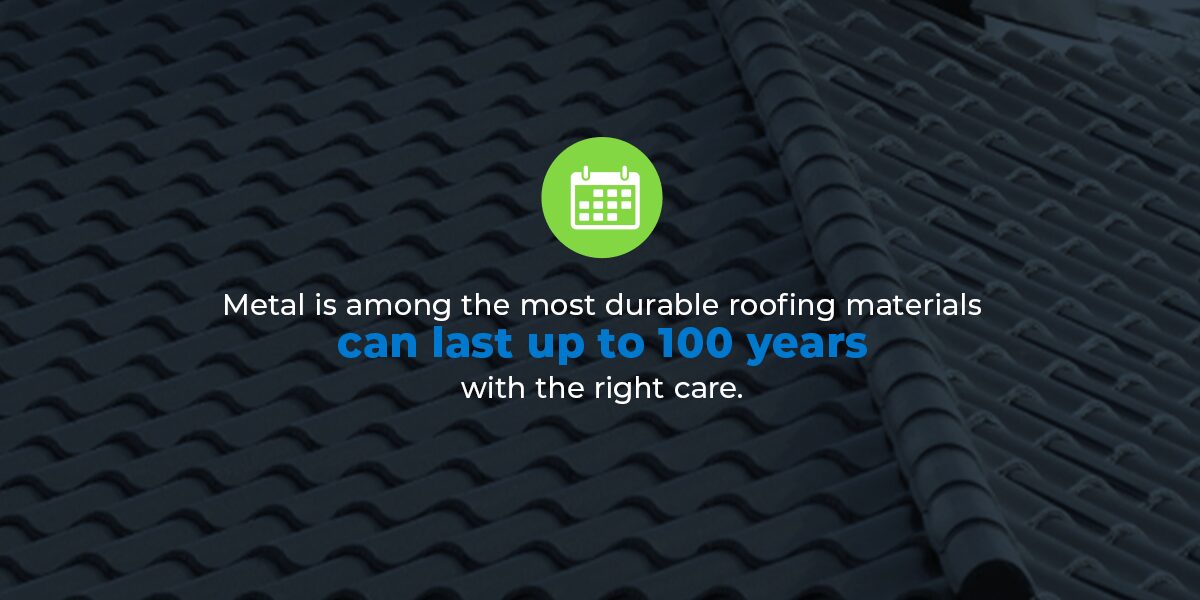
Comparative Analysis: Is Aluminum Roofing Right for Me?
Home and building owners who choose aluminum roofing can enjoy significant cost savings and other benefits.
Aluminum vs. Asphalt
While asphalt is cheaper to install, it requires more maintenance and upkeep than aluminum roofing, which makes it costlier in the long run. Asphalt shingles are vulnerable to moisture and humidity and may crack, curl or dislodge in certain temperatures or weather conditions. You can expect to replace asphalt shingles every 12 to 20 years, while aluminum can last decades with proper installation.
Unlike asphalt, aluminum is resistant to mold and fungal growth. It’s also a far more sustainable and eco-friendly option — asphalt contains crude oil, and 20 billion pounds of it end up in landfills annually.
Aluminum vs. Wood
Aluminum is durable against moisture and can be fire-resistant if paired with the correct underlayment. This is not the case with wood shakes, which are never fire-resistant and are susceptible to breakage, warping and rot in wet conditions. Wood shake roofs require regular treatments to protect them from insect- and weather-related damage. These qualities ultimately make wood a more expensive investment, as it requires more frequent replacements. It is also not a low-maintenance roofing option, as it needs extensive upkeep.
While many choose wood for its rustic visual appeal, certain types of metal roofing can imitate the appearance of wood for a more durable, longer-lasting alternative. Wood roofing is often believed to be quieter than metal, but installers can use various strategies that make aluminum roofing nearly undetectable during rain or hail.
The environmental benefits of metal roofs are similar to wood. Both materials are 100% recyclable, but wood has the added benefit of being a renewable resource. It’s also more resistant to impact, though thicker aluminum roofing can withstand a lot of force.
Aluminum vs. Slate
The primary advantage of slate roofing is that it’s very durable — some roofs have been known to last hundreds of years. Part of this is due to its natural frost and weather resistance. It is also fire- and mold-proof.
That said, slate’s longevity comes at a cost. It’s generally more expensive than aluminum and is significantly heavier. If your building cannot support the extra weight, you risk cracking your drywall. Unlike lighter-colored aluminum, it can’t be classified as a “cool” roofing material, so don’t expect any energy savings.
While slate comes in several shades of gray, black, blue, green, red and purple, you can also have your aluminum roof coated with various colors and finishes to customize its appearance.
Aluminum vs. Other Metals
Metal is a more cost-effective, energy-efficient and eco-friendly material than other roofing options. Which type of metal is right for your home or business depends on several factors:
- Initial and ongoing budget: Aluminum typically costs more than steel, but it’s more affordable than zinc or copper.
- Environmental conditions: All metal types make for weather-resistant roofs, as they’re resilient to moisture and temperature fluctuations. Aluminum is ideal if you live in a region that experiences heavy, frequent rainfall or near the coast.
- Desired appearance: Copper is beloved for its striking appearance and greenish patina. Zinc undergoes a similar patina process that adds to its longevity. However, these options are expensive and often more fragile than aluminum. Aluminum and steel roofs from Modern Metal Roofing can be coated with special finishes to achieve your desired look.
- Upkeep requirements: All metal roofing can last decades with proper installation and maintenance, but some materials require more upkeep than others. For example, aluminum and steel require very little cleaning or repair, while copper is more prone to expansion and contraction.
Trust Modern Metal Roofing for High-Quality Metal Roofs
Aluminum roofing from Modern Metal Roofing is as durable as it is beautiful. Our roofs have achieved the highest rating for wind and hail — Class 4 — and every component is made from high-quality, U.S.-sourced materials. Explore our aluminum options and contact us to find an approved installer near you.
